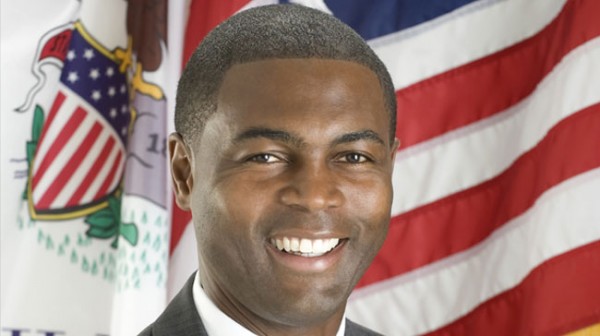In one of his most well-known writings, Dr. King wrote these words from the Birmingham jail: “We are caught in an inescapable network of mutuality, tied in a single garment of destiny. Whatever affects one directly, affects all indirectly.”
But we must look at the sentence that comes just before these words of inclusion and acceptance. Dr. King writes: “Injustice anywhere is a threat to justice everywhere.”
These words resonate very strongly today.
Dr. King knew Chicago well. He lived in North Lawndale and led demonstrations against segregation in education, housing and employment.
After he was hit in the head by a rock during a peaceful march in Marquette Park, he said, ‘‘I have seen many demonstrations in the South, but I have never seen anything so hostile and so hateful as I’ve seen here today.’’
What would Dr. King say if he was here now and if he walked through our black neighborhoods and communities of color here in Chicago?
Well, I think he would certainly see colors in our communities.
Dr. King would see red “X”s on our abandoned buildings, blue light cameras perched high on our street corners and red light cameras ready to trick us and to empty our wallets.
He would see dirty gray plywood covering the windows of our shuttered schools, and he might wonder why we need yellow Safe Passage signs in the first place.
Dr. King would see the green and orange Newport signs targeting our communities so people become addicted to menthol cigarettes, and he would see the bright flashing white LED lights on liquor store windows.
Dr. King would see purple crosses marking where a neighbor died, surrounded by dark green Remy Martin bottles, surrounded by pink teddy bears, Jesus candles and deflated orange balloons. And he would see multi-colored RIP T-shirts.
What would Dr. King say about our black communities so stigmatized by these signs, by these colors?
How can we move forward? What are the colors that should inspire us?
First, we need to be proud of our heritage. For African Americans and all people whose origins are Mother Africa, we can be inspired by the red, black and green of the Pan-African flag.
The Pan-African colors on the flag represent values, history and resources that can guide us:
Red represents the blood that unites all people of Black African ancestry, and was shed for liberation.
Black represents black people whose existence as a nation, though not just a nation-state, is affirmed by the existence of the flag.
And green represents the abundant natural wealth of Africa.
Along with recognizing, valuing and celebrating our heritage, we can also realize that our United States Constitution was ordained and established so we could form a more perfect union, a blend of peoples from all over our world, a mixture of colors, with the common vision and goal of liberty and justice for all.
Dr. King gave his life 49 years ago promoting the principles of nonviolent activism to advance a more perfect union.
So even in the face of so many challenges and so much work to be done to achieve liberty and justice for all, let’s continue to be inspired by the colors of our flag, the red, white and blue of the flag of the United States of America.
In our flag, the white signifies purity and innocence; red stands for hardiness and valor; and blue signifies vigilance, perseverance and justice.
The colors of our flag are symbols of hope and are constant reminders of the hope that each of us can fight for, including reentry for those with criminal backgrounds, access to quality health care, fair housing, safe communities, quality schools, healthy food choices, Black Lives Matter, a fair justice system, a police system that truly serves and protects – and a more perfect union.
We can participate in living out the meaning of the colors of our flag in many ways, including running for public office, hosting town hall meetings, and starting or continuing to build block clubs and community organizations.
Let us always remember the teachings of Dr. King and the values represented by the colors of our flag as we work for liberty and justice for all.
State Rep. La Shawn Ford represents Austin in the Illinois House of Representatives.
